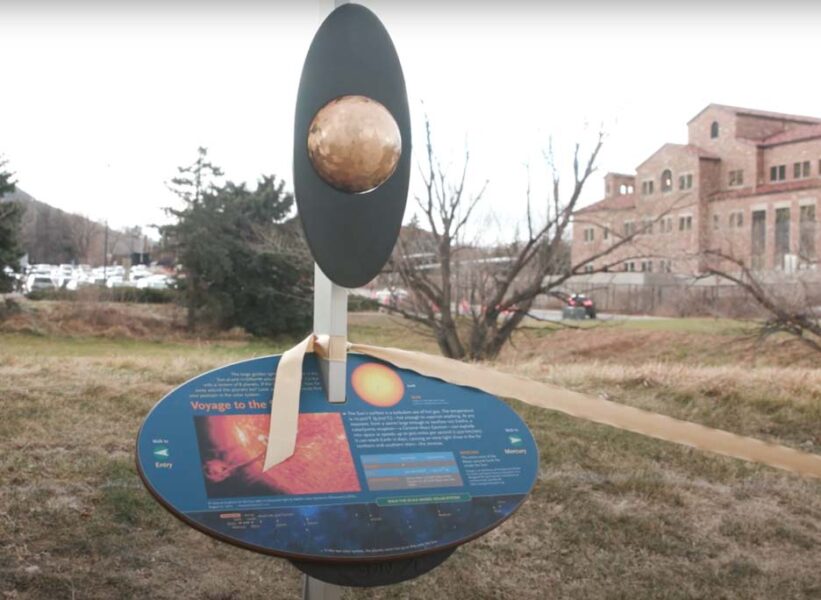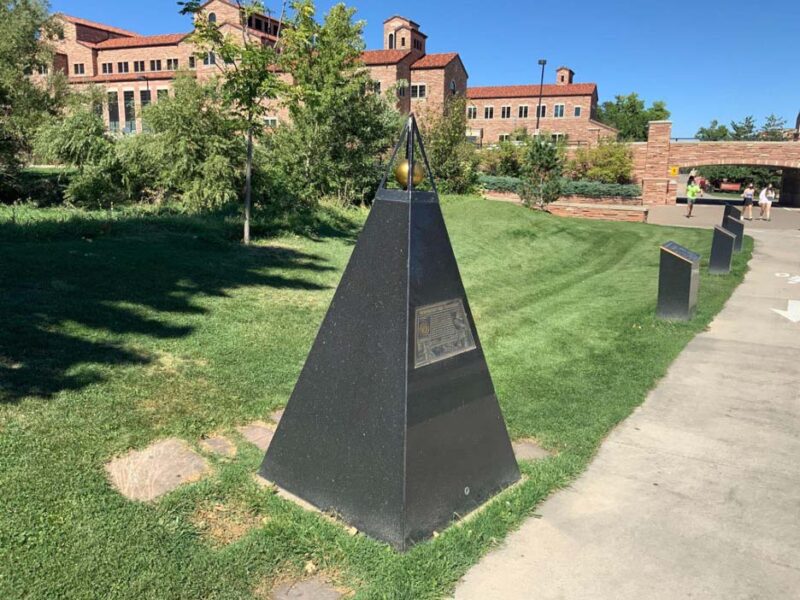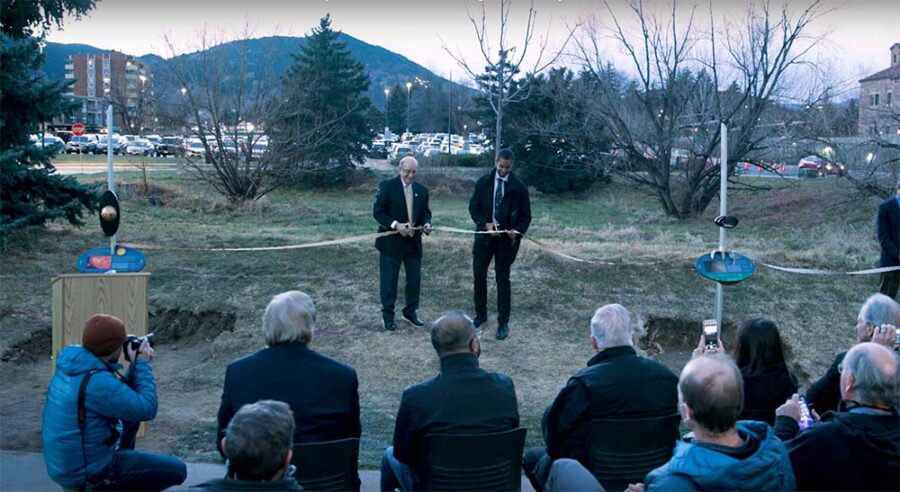The University of Colorado, Boulder, has unveiled a 1:10 billion scale-model solar system with an interactive sound experience.
Have you ever longed to experience a planetary voyage through the solar system? Or to travel from the Sun to Jupiter? The University of Colorado, Boulder (CU Boulder) has just unveiled a 1:10 billion scale-model solar system that allows you to do just that.

James Negus
The new model supersedes an older model installed in 1987. That original model, which the university dedicated in May 1987 to Challenger astronaut and CU Boulder alumnus Ellison Onizuka, served as the inspiration for the “Voyage Mark I” scale model solar system permanently installed on the National Mall in Washington, D.C. Built by the Voyage National Program, that model was also 1:10 billion in scale and housed the scaled Sun atop a black granite pyramid.

James Negus
Now, CU is leading the way with the world’s first installation of the more materials-efficient, and therefore cost-effective, “Voyage Mark II” model. This updated model is intended to serve as a prototype for affordable installations around the globe.
The new model’s Sun, about the size of a grapefruit, resides outside the university’s Fiske Planetarium and marks the beginning of the scale-model solar system. About 20 paces away is the model Earth — roughly the size of the tip of a ballpoint pen. Further out, at about 100 paces from the model Sun (past the model’s asteroid belt stanchion), one approaches the first gas giant, Jupiter — about the size of a marble. The scale model continues for about a third of a mile before reaching the dwarf planet Pluto. But it doesn’t end there! Beyond Pluto, a final stanchion resides at the scaled distance where the Voyager 1 spacecraft took the famous “pale blue dot” image on February 14, 1990.
Just as a CU Boulder graduate student, Jeffrey Bennett, had led the development of the original model solar system another graduate student, James Negus, motivated the update. While teaching an introductory astronomy lab, Negus noticed that the existing model showed cracking from weathering and vehicle collisions throughout the years. He also observed that the exhibit still listed Pluto as a planet! So, in 2018, he began a campaign with the help of Fiske Planetarium director John Keller, the University’s Sommers Bausch Observatory director Seth Hornstein, and Bennett to upgrade the original model to a system with upgraded graphics and scientific content.

Univeristy of Colorado, Boulder
The team also connected with communications professor Teri Reub to build a free mobile app that pair with the new exhibit, now available on Apple’s App Store. Wanderers CU provides a sound experience that responds to a visitor’s movement throughout the model.
Visitors can listen to each planet’s relative mass and orbital period converted to audible "chords", with each celestial body (including the asteroid belt and dwarf planet Pluto) having a unique frequency inversely proportional to its mass. As the mobile listener journeys from planet to planet, they hear a dynamic soundscape in which the volume and direction of the sounds from each planet change depending on the participant’s location in the exhibit.
Listen to an example here:
The team raised the funds to acquire the new model over three years. Now, 11 additional communities have committed to building their own scale models based on this representation, and more than 40 others have expressed interest. The new model and Wanderers app will serve as educational resources for the students at CU Boulder and for all visitors to the campus.
 1
1
Comments
altrock
January 21, 2022 at 9:52 pm
This was most recently (to my knowledge) installed several years ago by the National Solar Observatory at its Sunspot, NM, location, extending to Cloudcroft, NM. NSO is now located at UCB and no longer maintains the Sunspot model.
You must be logged in to post a comment.
You must be logged in to post a comment.